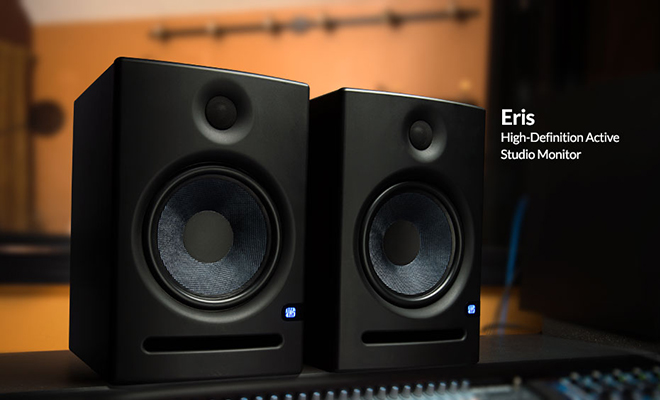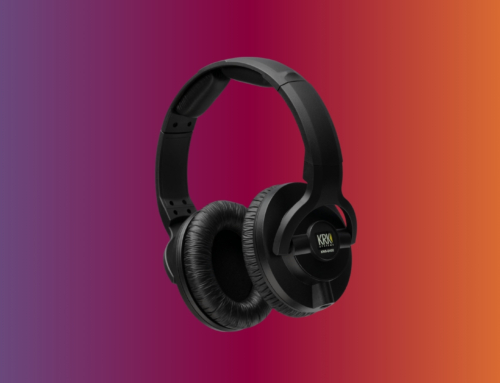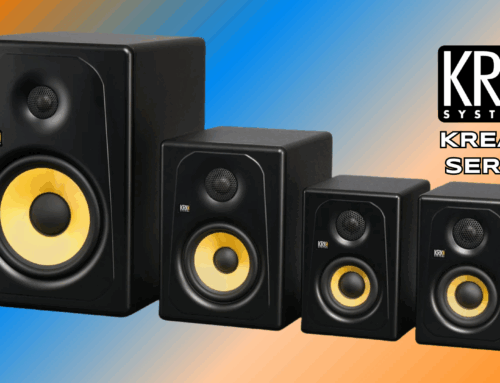PreSonus is no stranger to the studio gear market, having maintained lines of mixers, audio interfaces, and monitor controllers for a number of years. So, including studio monitors in with that variety – as PreSonus did officially at NAMM in January 2013 – makes sense.
At the time, two product lines debuted: The Sceptre and Eris. The latter of these two includes three different monitors: The E4.5, the E5, and the E8, the largest of the group.
On a very general level, this high-definition active studio monitor stands out with its bi-amped design, Kevlar low-frequency transducers, low-mass silk-dome tweeter, Class AB biamplification, and professional-quality acoustic-adjustment controls located on the rear panel. Taking this a step further for the producer or engineer is a decent price that more than justifies itself. Specifically, the range and quality, not to mention the innovative controls, make this monitor the must-have versatile item for your home studio or any audio project for that matter.
 As far as features and capabilities are concerned, the Eris E8, more so than the other two making up the line, offers an extended low frequency response – ideal for bass reproduction. The E8’s 75 watt, Class AB power amplifier drives the 8-inch woofer, while a 65W Class AB amplifier powers the 1.25-inch tweeter. This allows the speaker to reach all the way from 22 kHz down to 35 Hz and enables the Eris E8 to deliver up to 105 dB SPL.
As far as features and capabilities are concerned, the Eris E8, more so than the other two making up the line, offers an extended low frequency response – ideal for bass reproduction. The E8’s 75 watt, Class AB power amplifier drives the 8-inch woofer, while a 65W Class AB amplifier powers the 1.25-inch tweeter. This allows the speaker to reach all the way from 22 kHz down to 35 Hz and enables the Eris E8 to deliver up to 105 dB SPL.
In terms of making a connection between the Eris E8 and another device, this monitor’s particularly versatile. It comes with balanced XLR, balanced TRS, and unbalanced line-level RCA inputs; when both balanced connectors are being used, the TRS replaces the XLR. Either way, this combination lets the user connect the Eris E8 to any line-level source without making compromises in sound.
What’s particularly notable is the Eris E8’s good flat response sound. This comes as a result of the customization provided by the acoustic tuning controls.
Out of the four controls, Input Gain determines the signal level before it gets to the power amp. The user, then, can calibrate their speakers to the listening volume at which they prefer to mix while also maximizing the signal-to-noise ratio.
 Three EQ controls (available for both the E8 and E5) touch on high, mid, and low cut. Giving the device a surprisingly high level of accuracy, they allow the producer or engineer to test out a recording with emulations of different types of standard speakers. Specifically, if you’re looking for car stereo emulation, crucial if you’re making a potential radio hit, the Mid cut gives you what you need without forcing you to test out the recording in a car. Similarly, the Low cut can be used to match the E8 with a subwoofer and, when combined with a boost in the Mid control, also replicates the sound of a cheap radio.
Three EQ controls (available for both the E8 and E5) touch on high, mid, and low cut. Giving the device a surprisingly high level of accuracy, they allow the producer or engineer to test out a recording with emulations of different types of standard speakers. Specifically, if you’re looking for car stereo emulation, crucial if you’re making a potential radio hit, the Mid cut gives you what you need without forcing you to test out the recording in a car. Similarly, the Low cut can be used to match the E8 with a subwoofer and, when combined with a boost in the Mid control, also replicates the sound of a cheap radio.
For the third control, a three-position acoustic space switch assists with compensating for the increased bass response that happens when you place a monitor close to a wall or in a corner. The switch works with a second-order, low-shelving filter that reduces the level of all frequencies under 800 Hz by a specified amount.
Together, the four controls assist with creating a sound free of unnecessary coloring and a linear response for accurate monitoring. Listeners get to hear the full mix with precise, defined bass, clean, smooth upper end, and decent transient response. No matter the recording, the balance assists all in the studio with hearing details, including unnecessary sounds that should be edited out, rather than end up on the final product.
Beyond the sound quality, PreSonus made a fairly portable speaker – albeit one that looks a bit larger than a standard eight-inch monitor but feels slightly lighter. As well, the design takes common problems into consideration: soft startup, RF shielding to block out radio frequencies, temperature protection, current-output limiting, and subsonic protection to remove extremely low-frequency vibrations.
Ultimately, someone looking to setup a home studio or who needs portable monitors ought to go with the PreSonus Eris E8. The quality’s professional level, the functions are versatile, and the design is fairly portable – so how much more could you want?





